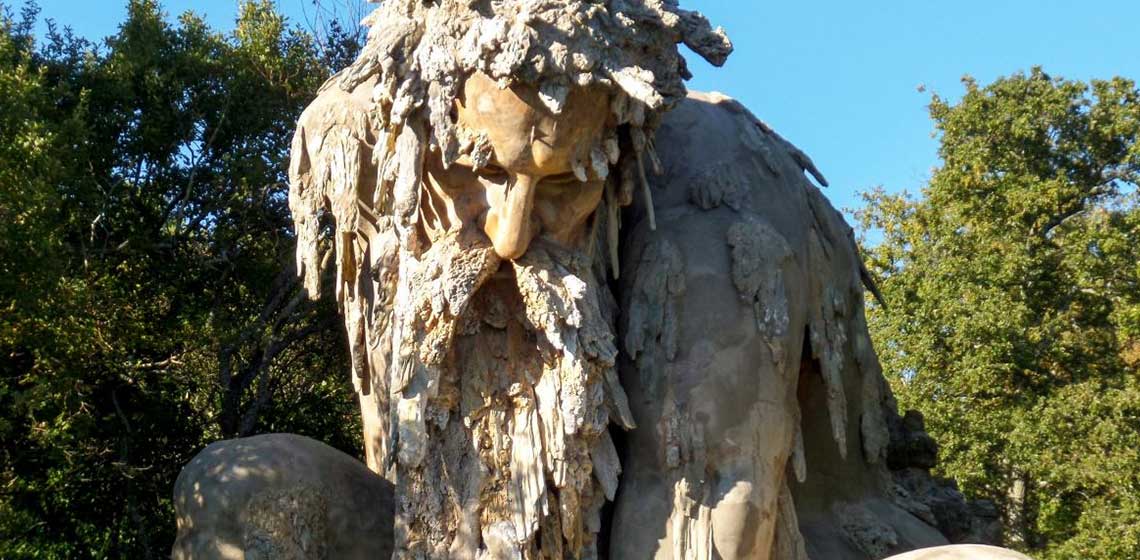
Visit Pratolino Park (Villa Demidoff)
A monumental park worth discovering found at the gates of Florence.
Have you ever heard of the Giant of the Apennines?
It’s one of the wonders found in Pratolino Park and one of the many surprises you’ll encounter during your visit.
Pratolino Park is located amidst Florence’s hills on via Bolognese going towards the Mugello area. Boasting a long history, it’s one of the largest parks in the metropolitan area of Florence and was declared a UNESCO World Heritage Site in 2013.
Pratolino Park for history lovers
The building complex was once a Medici Villa, though today it boasts a Russian name: Villa Demidoff.
Curious why?
In 1872 the park was sold to Russian Prince Paul II Demidoff who renovated the buildings found on the property and expanded its namesake villa. The park was rearranged into what you’ll see today, which visitors can admire in its original splendor.
Francesco I de Medici is recorded to have bought the Medici villa and park in 1568, his intention supposedly to make a fairytale setting for his second wife Bianca Cappello. For this task he entrusted the villa’s construction to mastermind Bernardo Buontalenti.
Not all of his architectural wonders have survived the passing of time, so visitors are left to imagine its original appearance: a magical place with water features and automatisms, a labyrinth, fountains and caves.
Though many have been lost, a number of these wonders are still visible today.
After the death Francesco I and Bianca, the park and the villa were abandoned and fell into a state of ruin until the arrival of the Lorraine family in the 19th century. The family bought the park and brought it back to life, giving it the period’s typical “romantic” appearance.
A perfect mix of art and nature
The park is a real work of art immersed in the greenery of its landscape, featuring artificial caves, fountains and spellbinding buildings and sculptures.
Don’t miss seeing the Locanda, the Buontalenti Chapel, the Vasca della Maschera, Cupid’s Grotto, the Mugnone Grotto, the Paggeria, the Great Aviary and of course, the Giant of the Apennines: all this and more in the garden’s 19th-century romantic atmosphere.
The park is also an important nature reserve, as it contains many age-old plants such as oaks, English oaks, cedars and horse chestnuts and is home to many animal species such as fallow deer, foxes and hares.
Guests may generally only visit the monumental area, but organized groups may request to see a number of spaces that are normally closed to the public. Visitors can choose between a historic-artistic itinerary and a naturalistic route, perfect for trekking enthusiasts or for simply unwinding while surrounded by nature.
The Giant of the Apennines
This statue alone is reason enough to visit to Pratolino Park. Half man, half mountain, this giant was created by Flemish sculptor Jean de Boulogne (known as Giambologna) in the second half of the sixteenth century.
It’s sure to amaze you for both its majesty and the realism it exudes.
This masonry statue extends over 14 meters into the air and is covered with plaster and stone. The figure seems on the verge of removing itself from the muddy waters, a powerful movement rendered eternal by its plastic realization. This sculptural performance is sure to leave you breathless.
There is a popular saying that says, “Giambologna made the Apennines, but regrets having done so in Pratolino.” Though the truth behind this saying remains uncertain, we can be sure that if the gigantic statue had been placed in a historic center, such as piazza della Signoria, its fame would be of a different sort today.






 All the services are provided by local merchants
All the services are provided by local merchants By using this site you support Florence
By using this site you support Florence We offer products with high-quality standards
We offer products with high-quality standards You stay sustainable
You stay sustainable It's a 100% trustworthy website
It's a 100% trustworthy website